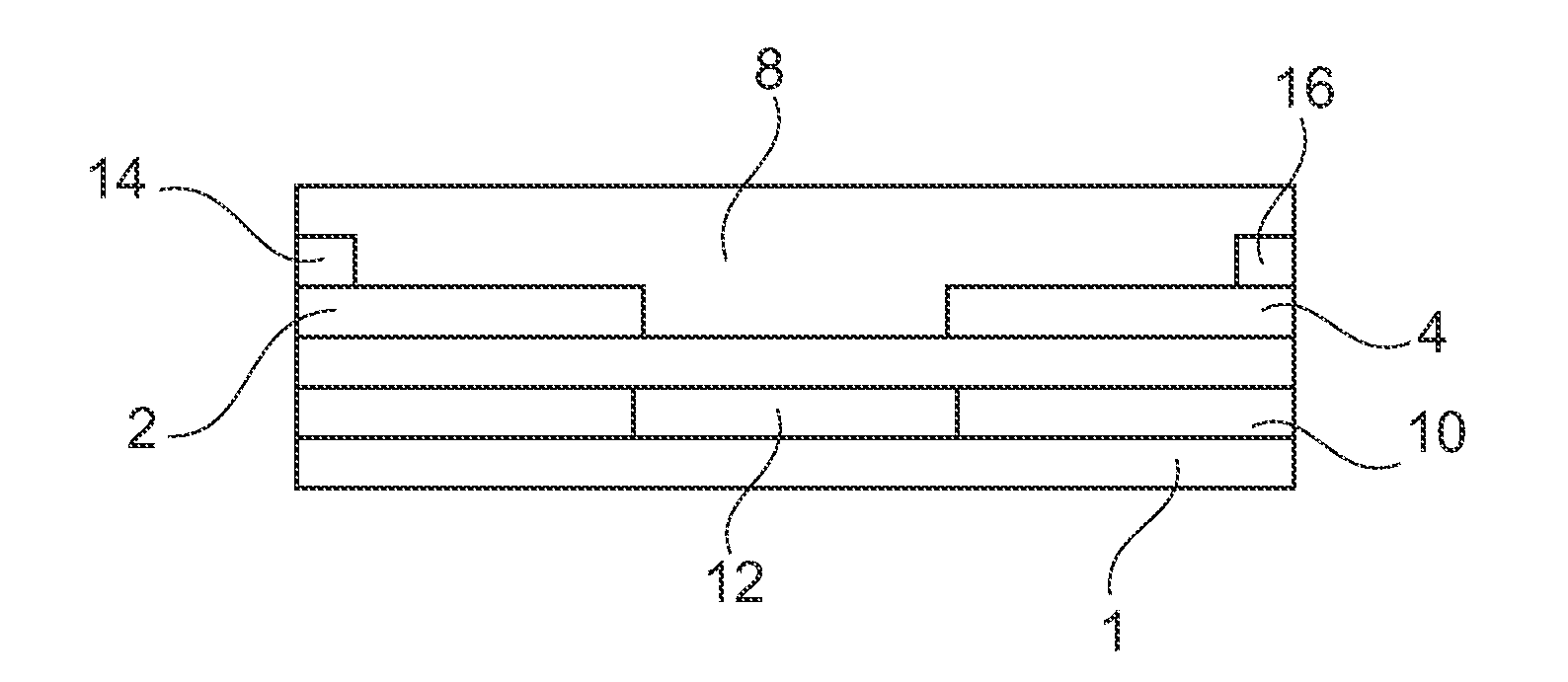Method of Making an Organic Thin Film Transistor
a thin film transistor and organic technology, applied in the direction of transistors, semiconductor devices, electrical devices, etc., can solve problems such as curved domains
- Summary
- Abstract
- Description
- Claims
- Application Information
AI Technical Summary
Benefits of technology
Problems solved by technology
Method used
Image
Examples
Embodiment Construction
[0057]An example method of how the present technique may be carried out is shown schematically in FIG. 3.
[0058]In step 1, a substrate 1 is initially prepared by formation of source and drain electrodes 2, 4 thereon.
[0059]In step 2, crystallisation sites 14, 16 are formed on the substrate 1 adjacent the source and drain electrodes 2, 4. The crystallisation sites 14, 16 may comprise a de-wetting material such as Teflon™.
[0060]In step 3, a solution of an organic semiconductor 8 is deposited. The organic semi-conductive material may be solution processable such that it can be deposited from solution by, for example, ink-jet printing. The organic semi-conductive material may comprise a small molecule organic semi-conductor, a polymer or a dendrimer. Many such semi-conductive materials are known in the art.
[0061]In step 4, while the solution of organic semiconductor 8 is still wet, a shearing substrate 18 is placed on the solution and dragged in a source-to-drain direction as indicated by...
PUM
 Login to View More
Login to View More Abstract
Description
Claims
Application Information
 Login to View More
Login to View More - R&D
- Intellectual Property
- Life Sciences
- Materials
- Tech Scout
- Unparalleled Data Quality
- Higher Quality Content
- 60% Fewer Hallucinations
Browse by: Latest US Patents, China's latest patents, Technical Efficacy Thesaurus, Application Domain, Technology Topic, Popular Technical Reports.
© 2025 PatSnap. All rights reserved.Legal|Privacy policy|Modern Slavery Act Transparency Statement|Sitemap|About US| Contact US: help@patsnap.com



